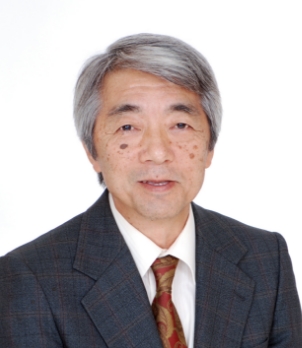
所長
目加田 英輔
Eisuke Mekada, Ph.D.
略歴
- 1974年 山形大学理学部生物学科卒
- 1974年 大阪大学微生物病研究所 研究生
- 1979年 大阪大学微生物病研究所 助手
- 1982年 医学博士(大阪大学 第5552号)
- 1982年 大阪大学細胞工学センター 助手
- 1988年 大阪大学細胞工学センター 助教授
- 1989年 久留米大学分子生命科学研究所 教授
- 2000年 大阪大学微生物病研究所 教授
- 2011年 大阪大学微生物病研究所 所長
- 2019年 大阪大学国際共創大学院学位プログラム推進機構 特任教授
- 2024年 本学客員教授
著書等
- "Toxin receptors" in The comprehensive Sourcebook of Bacterial Protein Toxins. Horiguchi Y and Mekada E. Academic Press, NY. (2006)
- Diphtheria toxin and the diphtheria-toxin receptor in "Handbook of Experimental Pharmacology" ed. by Aktories K and Just I. Springer-Verlag, Berlin (2000)
主な研究実績
- Iwamoto R, Mine N, Mizushima H, Mekada E. ErbB1 and ErbB4 generate opposing signals regulating mesenchymal cell proliferation during valvulogenesis. J Cell Sci. 130, 1321-1332, 2017.
- Moribe H, Konakawa R, Yoneda T, Koga D, Ushiki T, Nakamura K, Mekada E. Tetraspanin is required for generation of reactive oxygen species by the dual oxidase system in Caenorhabditis elegans. PLoS Genet. 8(9): e1002957, 2012.
- Iwamoto R, Mine N, Kawaguchi T, Minami S, Saeki K, Mekada E. HB-EGF function in cardiac valve development requires interaction with heparan sulfate proteoglycans. Development 137, 2205-2214, 2010.
- Mizushima H, Wang X, Miyamoto S, Mekada E. Integrin signal masks growth-promotion activity of HB-EGF in monolayer cell cultures. J Cell Sci. 122, 4277-4286, 2009.
- Moribe H, Yochem J, Yamada H, Tabuse Y, Fujimoto T, Mekada E. Requirement for TSP-15, a tetraspanin protein, for epidermal integrity in Caenorhabditis elegans. J Cell Sci. 117, 5209-5220, 2004.
- Miyamoto S, Hirata M, Yamazaki A, Kageyama T, Hasuwa H, Mizushima H, Tanaka Y, Yagi H, Sonoda K, Kai M, Kanoh H, Nakano H, Mekada E. Heparin-binding EGF-like growth factor and the LPA-induced ectodomain shedding pathway is a promising target for the therapy of ovarian cancer. Cancer Res. 64, 5720-5727, 2004.
- Yamazaki S, Iwamoto R, Saeki K, Asakura M, Takashima S, Yamazaki A, Kimura R, Mizushima H, Moribe H, Higashiyama S, Endoh M, Kaneda Y, Takagi S, Itami S, Takeda N, Yamada G, Mekada E. Mice with defects in HB-EGF ectodomain shedding show severe developmental abnormalities. J Cell Biol. 163, 469-475, 2003.
- Iwamoto R, Yamazaki S, Asakura M, Takashima S, Hasuwa H, Miyado K, Adachi S, Kitakaze M, Hashimoto K, Raab G, Nanba D, Higashiyama S, Hori M, Klagsbrun M, Mekada E. HB-EGF and ErbB signaling is essential for heart function. Proc Natl Acad Sci USA. 100, 3221-3226, 2003.
- Umata T, Hirata M, Takahashi T, Ryu F, Shida S, Takahashi Y, Tsuneoka M, Miura Y, Masuda M, Horiguchi Y, Mekada E. A dual signaling cascade that regulates the ectodomain shedding of HB-EGF. J Biol Chem. 276, 30475-30482, 2001.
- Miyado K, Yamada G, Yamada S, Hasuwa H, Nakamura Y, Ryu F, Suzuki K, Kosai K, Inoue K, Ogura A, Okabe M, Mekada E. Requirement of CD9 on the egg plasma membrane for fertilization. Science 287, 321-324, 2000.
- Nakamura K, Iwamoto R, Mekada E. Membrane anchored heparin-binding EGF-like growth factor and DRAP27/CD9 form a complex with integrin a3b1 at cell-cell contact sites. J Cell Biol. 129, 1691-1705, 1995.
- Iwamoto R, Higashiyama S, Mitamura T, Taniguchi N, Klagsbrun M, Mekada E. Heparin-binding EGF-like growth factor, which acts as the diphtheria toxin receptor, forms a complex with membrane protein DRAP27/CD9, which up-regulates functional receptors and diphtheria toxin sensitivity. EMBO J. 13, 2322-2330, 1994.
- Mitamura T, Iwamoto R, Umata T, Yomo T, Urabe I, Tsuneoka M, Mekada E. The 27-kD diphtheria toxin receptor-associated protein (DRAP27) from Vero cells is the monkey homologue of human CD9 antigen: Expression of DRAP27 elevates the number of diphtheria toxin receptors on toxin-sensitive cells. J. Cell Biol. 118,1389-1399, 1992.
- Mekada E, Senoh H, Iwamoto R, Okada Y, Uchida T. Purification of diphtheria toxin receptor from Vero cells. J Biol Chem. 266, 20457-20462, 1991.
- Iwamoto R, Senoh H, Okada Y, Uchida T, Mekada E. An antibody that inhibits the binding of diphtheria toxin to cells, revealed the association of a 27-kDa membrane protein with the diphtheria toxin receptor. J Biol Chem. 266, 20463-20469, 1991.
- Mekada E, Okada Y, Uchida T. Identification of diphtheria toxin receptor and a non-proteinous diphtheria toxin-binding molecule in Vero cell membrane. J Cell Biol. 107, 511-519, 1988.
- Yamaizumi M, Mekada E, UchidaT, Okada Y. One molecule of diphtheria toxin fragment A into a cell can kill the cell. Cell 15, 245-250, 1978.
- Mekada E, Yamaizumi M, Uchida T, Okada Y. Quantitative introduction of a given macromolecule into cells by fusion with erythrocyte ghosts using a fluorescence activated cell sorter. J Histochem Cytochem. 26, 1067-1073, 1978.

